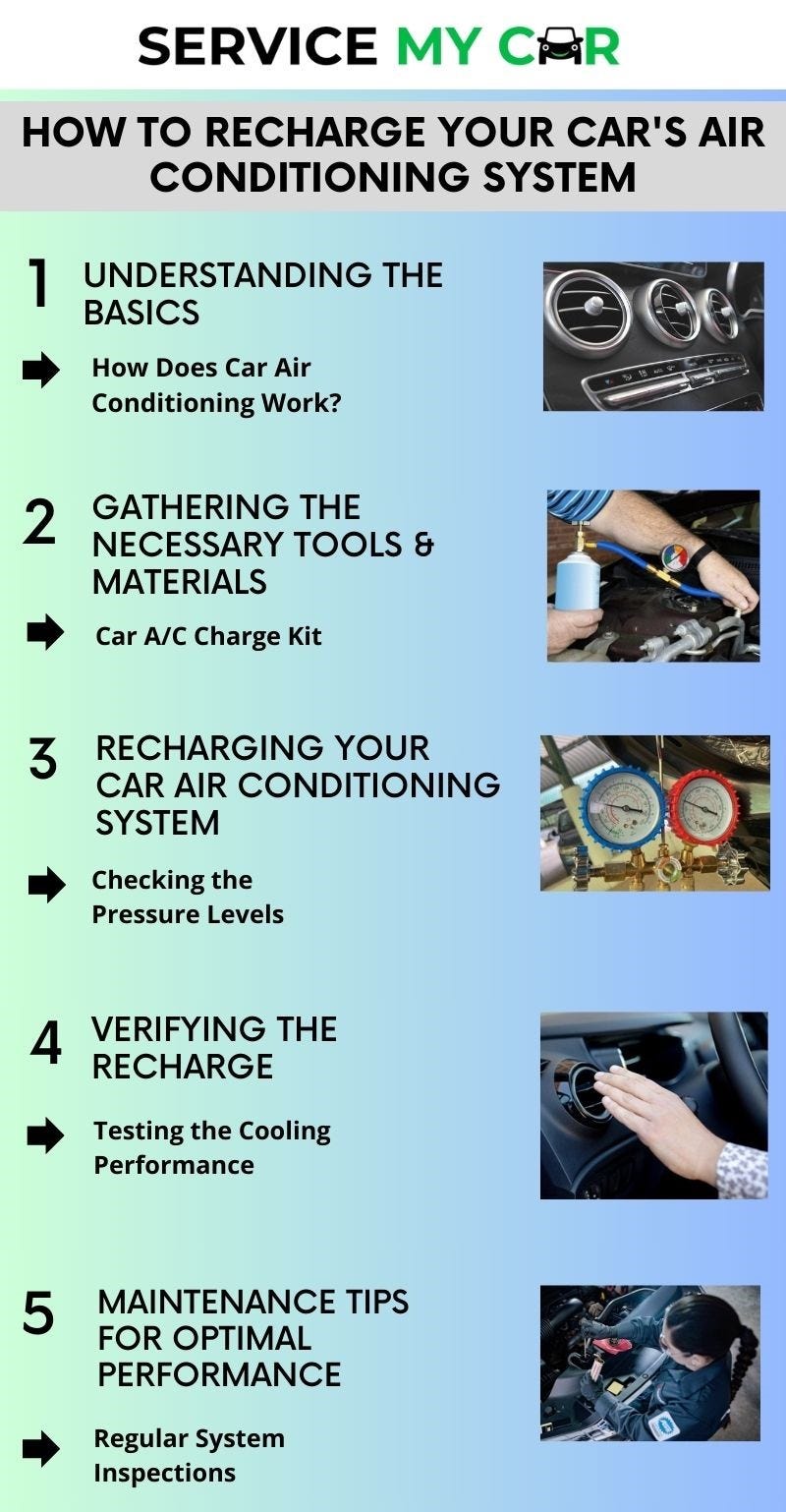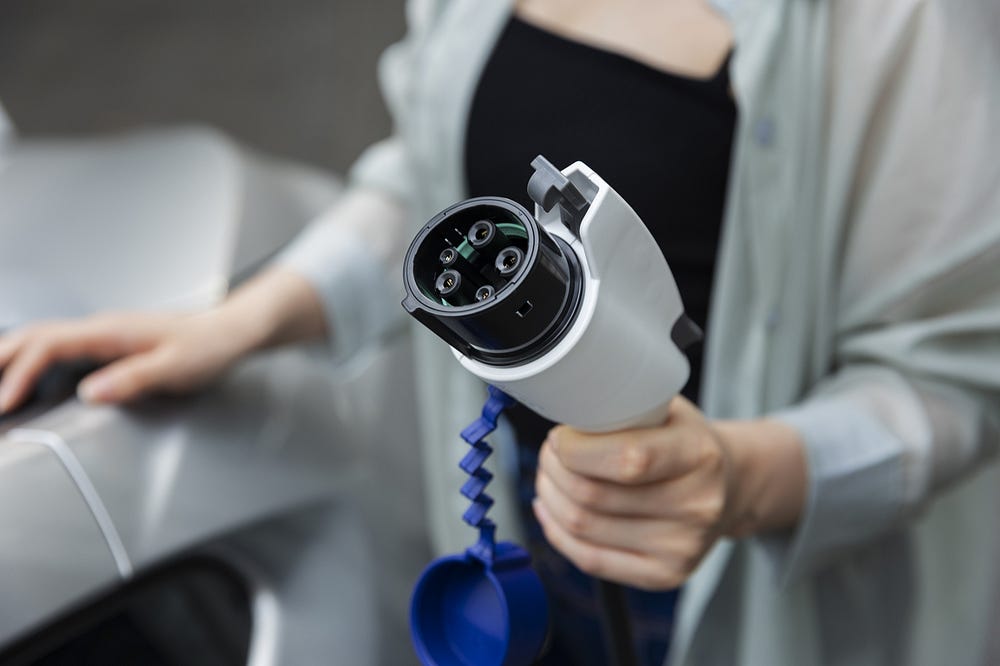How to Recharge Your Car’s Air Conditioning System: A Comprehensive Guide
Overview
- Category: Cars
- Condition: New
- Brand: Other Brand
- Engine Capacity: manchester
Description
As the summer heat intensifies, your car’s air conditioning system becomes a crucial component for a comfortable driving experience. However, over time, the system may lose its cooling capacity, causing discomfort during hot weather. In such cases, recharging the car’s air conditioning system can effectively restore its cooling performance.

This comprehensive guide will take you through the step-by-step process of recharging your car’s air conditioning system, ensuring that you can tackle this DIY task with ease.
Understanding the Basics
How Does Car Air Conditioning Work ?
Before diving into the recharge process, it’s essential to understand how your car’s air conditioning system works. The system operates by compressing and expanding refrigerant, which absorbs heat from the cabin and releases it outside. The key components include the compressor, condenser, evaporator, and expansion valve. Familiarizing yourself with these components will help you navigate the recharge process more effectively.
Signs That Your Car’s Air Conditioning System Needs Recharging
Recognizing the signs of a low refrigerant level is crucial for determining when it’s time to recharge your car’s air conditioning system. Some common indicators include warm air blowing from the vents, reduced cooling performance, unusual noises, and visible refrigerant leaks. Regularly inspecting and maintaining your air conditioning system can help prevent these issues.
Gathering the Necessary Tools and Materials
PSI Pressure Gauge
To accurately monitor the pressure levels during the recharge process, you’ll need a PSI pressure gauge. This tool allows you to determine the correct pressure range for your specific vehicle.
Car A/C Charge Kit
Investing in a car A/C charge kit is essential for a successful recharge. Ensure that the kit contains the proper refrigerant for your vehicle, as specified by the manufacturer. Additionally, consider opting for a kit with UV dye, which aids in detecting any potential leaks.
UV Kit
While not essential, a UV kit can be a valuable addition to your recharge process. The UV dye included in the kit helps identify minor leaks in the system, allowing for prompt repairs if necessary.
Preparing for the Recharge
Locating the Low-Side Port
To begin the recharge process, you need to locate the low-side port of your car’s air conditioning system. This port is typically found on the larger tube connecting the compressor and the evaporator. Consult your vehicle’s service manual or a trusted mechanic to ensure you locate the correct port.
Preparing the Recharge Kit
Before attaching the recharge kit, carefully read the instructions provided with the kit. Familiarize yourself with the specific steps and safety precautions outlined by the manufacturer. This will ensure a smooth and safe recharge process.
Recharging Your Car’s Air Conditioning System
Attaching the Recharge Kit
Now that you’re ready to recharge, attach the dispenser hose and gauge from the recharge kit to the can of refrigerant. Ensure a secure connection, as any leaks can compromise the effectiveness of the recharge process.
Connecting to the Low-Side Port
With the recharge kit prepared, connect the dispenser hose to the low-side port of your car’s air conditioning system. Make sure to follow the manufacturer’s instructions regarding the specific method of attachment for your kit.
Starting the Engine and Activating the A/C System
To begin the recharge process, start your car’s engine and activate the air conditioning system to its maximum setting. This will ensure proper circulation of refrigerant throughout the system.
Monitoring the Gauge Reading
As you dispense the refrigerant into the system, monitor the gauge reading provided by the recharge kit. The gauge will indicate the pressure levels in the system, helping you avoid over-pressurization and ensuring an optimal recharge.
Dispensing the Refrigerant
Follow the instructions provided with the recharge kit to dispense the refrigerant into the system. Shake the canister periodically to ensure even distribution and maintain a steady flow of refrigerant.
Checking the Pressure Levels
Continuously monitor the pressure levels indicated on the gauge throughout the recharge process. Consult the pressure chart included in the recharge kit instructions to determine the appropriate pressure range for your specific vehicle.
Completing the Recharge
Once the pressure levels reach the desired range, you can conclude the recharge process. Disconnect the dispenser hose from the low-side port, ensuring a secure seal to prevent any refrigerant leaks.
Checking for Leaks
If your recharge kit includes UV dye, you can perform a leak check after completing the recharge process. Use the UV pen to examine valves and junction points in the system. If any leaks are detected, consult a professional mechanic for repairs.
Verifying the Recharge
Testing the Cooling Performance
After recharging your car’s air conditioning system, it’s crucial to verify the effectiveness of the recharge. Turn on the air conditioning and assess the cooling performance. The difference should be noticeable immediately, with cold air flowing consistently from the vents.
Monitoring for Potential Leaks
To ensure the longevity of your recharge, periodically monitor the air conditioning system for any signs of refrigerant leaks. If you detect any issues, promptly address them to prevent further damage to the system.
Maintenance Tips for Optimal Performance
Regular System Inspections
Performing regular inspections of your car’s air conditioning system can help identify any potential issues before they escalate. Check for visible leaks, unusual noises, or reduced cooling performance. Addressing these problems early can save you from costlier repairs in the future.
Professional Maintenance
While recharging your car’s air conditioning system is a manageable DIY task, it’s advisable to seek professional maintenance periodically. Trained technicians can conduct comprehensive inspections, perform necessary repairs, and ensure optimal performance.
Conclusion
Thanks for giving your valuable time to read this blog, In case you have a Hummer car and you are looking for a hummer service center bolton for your car service than visit the Service My Car website for all the Hummer related solutions.
Recharging your car’s air conditioning system is an essential maintenance task that ensures your comfort during hot weather. By following this comprehensive guide, you can confidently undertake the recharge process, bringing back the cool air and enjoying a comfortable driving experience. Remember to prioritize safety, follow the manufacturer’s instructions, and seek professional assistance when needed. Stay cool and enjoy the journey!







